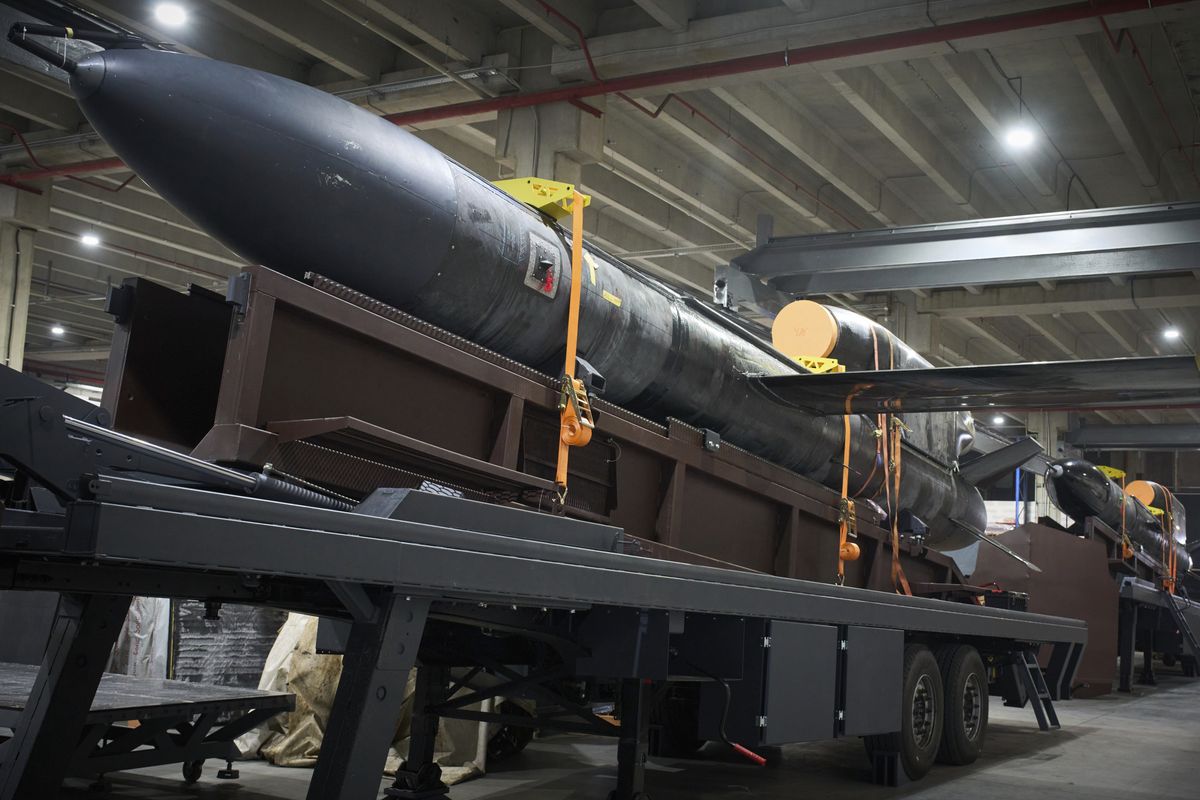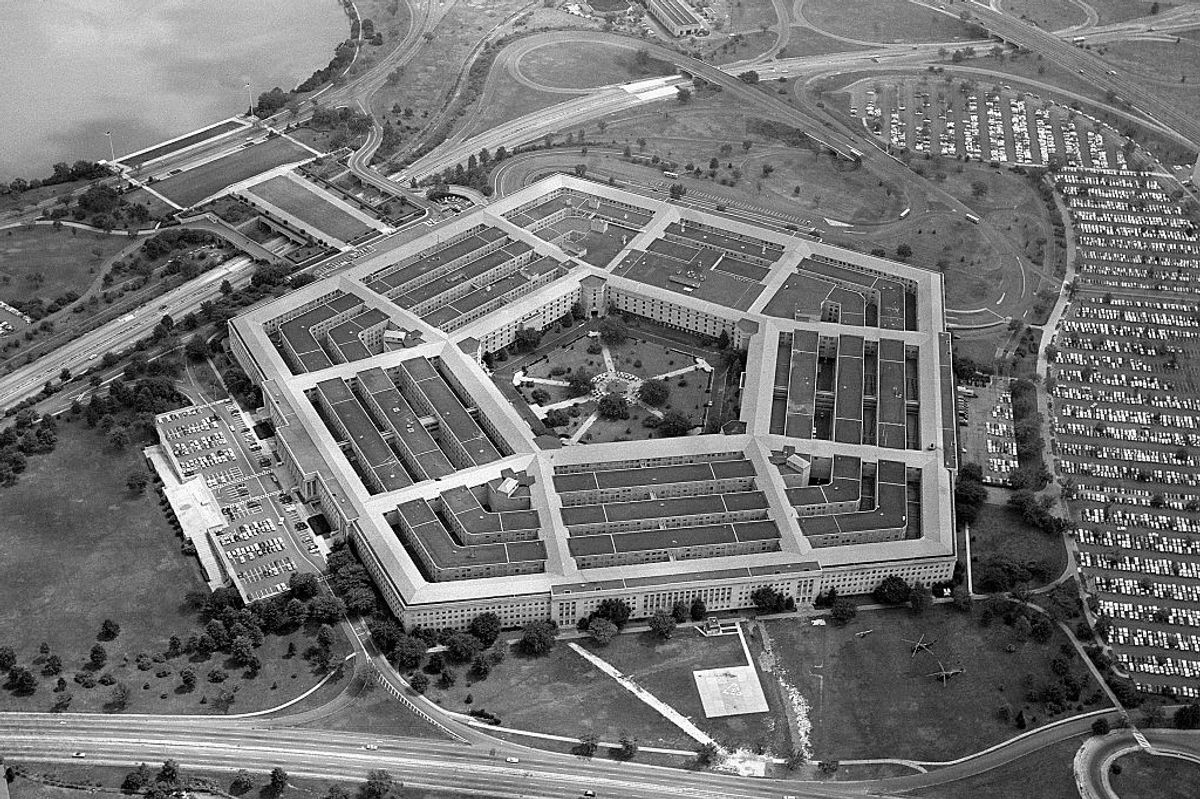OPINION — “The only time I can think of any history of the United States where we have gone after something this complex [President Trump’s “Golden Dome” for America – a new, space-based missile defense system] is the Manhattan Project [which developed the first atomic bombs]. That is how complex this capability is going to be. I want to tell you, it is not only complex because of technology. It is complex because of the number of organizations and agencies that need to be involved.”
That was General Michael A. Guetlein, Vice Chief of Staff for Space Operations, U.S. Space Force, speaking last Wednesday to the Senate Armed Services Subcommittee on Readiness about the problems generated by Trump’s desire for his Golden Dome for America.
The subject came up in the last 15 minutes of a more than two-hour hearing, and I was surprised to learn about the steps that have already taken place toward Trump’s dream without greater public discussion and debate – given the enormous military and diplomatic implications of the program.
For example, the Missile Defense Agency (MDA) issued a January 31 request for information (RFI) to potential contractors saying that “in response to [Trump’s January 27] Executive Order ‘The Iron Dome for America,’” the MDA was seeking “potential concepts to deploy and maintain a next-generation missile defense shield that will deter and defend its citizens and critical infrastructure against any foreign aerial attack on the [U.S.] Homeland and guarantee its secure second-strike capability.”
[As an aside, I must point out that the MDA RFI has had to change original references from “Iron Dome for America” to “Golden Dome for America,” as has President Trump, probably because “Iron Dome” is a registered trademark owned by the Israeli defense firm Rafael Advanced Defense Systems, which developed Israel’s existing Iron Dome system.]
This new MDA RFI marked an important change from the current U.S. missile defense strategy, which has focused on countering limited missile threats from rogue nations like Iran or North Korea, rather than the prospect of massive attacks from peer adversaries such as Russia or China.
Meeting such limited threats has meant having a growing number of space-based warning sensors and a modest number of ground- and sea-based defensive systems capable of mid-course or terminal interceptions of a limited number of incoming warheads.
However, the new MDA RFI greatly enlarged the threat and the required defensive systems by calling for: “Defense of the United States against ballistic, hypersonic, advanced cruise missiles, and other next-generation aerial attacks from peer, near-peer, and rogue adversaries.”
In other words, what is being proposed is a missile defense system that could protect the entire United States from a massive first strike from either Russia or China, or perhaps both together, and still leave the U.S. with enough nuclear warheads to cause unacceptable damage to the supposed aggressors.
The intersection of technology, defense, space and intelligence is critical to future U.S. national security. Join The Cipher Brief on June 5th and 6th in Austin, Texas for the NatSecEDGE conference. Find out how to get an invitation to this invite-only event at natsecedge.com
To help deter such an attack from occurring, there are several new capabilities being sought in the MDA RFI:
- Acceleration of the deployment of the Hypersonic and Ballistic Tracking Space Sensor layer, systems already in the testing phase.
- Development and deployment of proliferated space-based interceptors capable of boost-phase intercept. Space-based interceptors were central to President Ronald Reagan’s Strategic Defense Initiative in the 1980s, but abandoned because of technical challenges and high cost.
- Deployment of underlayer and terminal-phase intercept capabilities postured to defeat a countervalue attack, which would mean an attack against U.S. cities and civilian targets. This contemplates ground-based missile defense interceptors being located around all potential American cities and towns.
- Development and deployment of capabilities to defeat missile attacks prior to launch and in the boost phase. Attacking an adversary’s missiles “prior to launch” implies that the U.S. would be carrying out its own counterforce first strike.
Because of the complexity of the Golden Dome program, the MDA RFI established four future time periods for delivery or demonstration of proposed capabilities — the first by December 31, 2026, and the next three by the end of 2028, 2030, and in the last time frame, any time beyond that.
The MDA RFI has certainly drawn the attention of the defense industry. An “Industry Day” in February drew 560 representatives from 182 companies and 13 Defense Department agencies, with 89 one-on-one sessions to discuss proposals that were of the most interest.
Last week, Bloomberg reported that by the February 28 deadline for the MDA RFI, more than 360 company concept papers had been received for the Golden Dome initiative. Pentagon analysts are now studying the proposals.
Under President Trump’s January executive order, Defense Secretary Pete Hegseth is to submit to the White House by the end of this month the capabilities-based requirements for Golden Dome, along with an implementation plan.
At the Armed Services Subcommittee hearing last week, Space Force’s Gen. Guetlein said there had been a Pentagon meeting the previous day about Golden Dome with the Vice Chairman of the Joint Chiefs, Adm. Christopher W. Grady, and the Joint Requirements Oversight Council that included representatives of the Combatant Commands, DoD staffs, military service staffs, the National Geospatial-Intelligence Agency, MDA, and the National Reconnaissance Office, which builds and deploys satellites.
Guetlein said, “All present in that room [were] talking about what is it going to take to get after something of this magnitude?” He added, “Organizational behavior and culture are going to be our two biggest challenges. The way to get through organizational behavior and challenges is first and foremost that we have one person or entity in charge that has the full support of the President, the Hill [Congress], the American people on down [and] that entity needs to be empowered and resourced to make decisions across organizational boundaries.”
Meetings this week with the Deputy Defense Secretary Stephen A. Feinberg and perhaps Hegseth himself may take up the idea of a single entity, Guetlein indicated.
While Pentagon talks continue to shape the long-term problems, a handful of experts are discussing the broader implications of the effort – most important being the placing of weapons in space.
Looking for a way to get ahead of the week in cyber and tech? Sign up for the Cyber Initiatives Group Sunday newsletter to quickly get up to speed on the biggest cyber and tech headlines and be ready for the week ahead. Sign up today.
Let me say, as others have pointed out, that there is a difference between the militarization of outer space, and the weaponization of space. Militarization means using satellites to direct operations on the ground, or permitting communications among ground troops or airborne people or things. That has been going on since the first satellites went into orbit.
Weaponization is when space-based devices carry destructive capabilities, whether for other space objects or targets on the ground. The 1967 Outer Space Treaty bans any nuclear weapons or objects carrying WMD in space, or stationing of such weapons on celestial bodies. There are also rules governing the peaceful exploration and use of space.
Although as noted above, space was technically militarized from the moment the first communication satellites were placed in orbit, it’s apparent that a weaponization change may be underway.
For example, at a March 4 session of the Air Force Association’s meeting on Space Force Future Objectives, Lt. Gen. Shawn W. Bratton, the Space Force’s top officer for strategy, plans, programs, and requirements, joined a discussion of Golden Dome, saying, “There’s players across the Department of Defense and intelligence community all working on this problem, and we’re side by side with those teammates, but in the end, you gotta do some architecture work, and you pull in the best and brightest you got, you start creating kind of OV-1s [high-level operational concepts], and you look at the capabilities that we have today, and the things that are already programmed, and what’s coming.”
“From space,” Bratton said, “How do we think about what we can see from space in terms of space-based sensing and targeting, moving target indicator, missile warning, missile track, what can those things see, and does that contribute to the, ultimately, to the nation’s solution for Golden Dome?”
He added that some of these novel technologies can be a “real challenge,” describing the complexity of interceptors from space as “no joke of a physics problem.”
Then Bratton turned to what he called “some real challenges,” by which he said he meant Trump’s Executive Order call for “boost phase intercept from space.” That, Bratton said, “is no joke of a physics problem, but we owe an answer, you know, to the Secretary of Defense who will give it to the administration. So…we can’t just say that’s too hard. We have to deliver on these capabilities, and so, you know, we give our best answer, our best advice, and our best kind of estimate of how much this is gonna cost.”
I will note here that a 2012 National Academies of Science report reexamined space-based interceptors and warned that such complex systems to cover boost-phase intercepts could cost over $300 billion.
Meanwhile, in a February 4, article in SpaceNews, Clayton Swope and Tom Karako, two experts from the Center for Strategic and International Studies, said that while the U.S. has been “limiting counterspace operations to non-kinetic weapons, like electronic warfare and cyber,” China and Russia are aggressively using space for military operations, citing specifically the latter’s testing of what was believed a nuclear anti-satellite weapon.
Swope and Karako write, “Ignoring the potential of space-to-ground and space-to-air weapons misses a chance to develop entirely new ways to deliver firepower that could complement and back up traditional air power. Delivering munitions from space might be a way to bypass ever stronger integrated air defenses, which have proven effective in Ukraine and the Middle East, possibly foreshadowing what may play out in a future South China Sea conflict.”
They conclude, “We are now in a new space age, and a new missile age. The significant level of technological change, the unalterable fact that space has shifted from a sanctuary to a warfighting domain today, and evolving missile and nuclear threat landscape calls for a reevaluation of the feasibility and desirability of a space-based missile defense layer.”
But for the MDA RFI to even mention, as Trump’s Executive Order led them to do, the “Development and deployment of capabilities to defeat missile attacks prior to launch” puts the U.S. back in the Cold War “first-strike” days that in the end required more and more offensive nuclear weapons. This time they may end up, perhaps, not in ground silos but orbiting in space.
The Cipher Brief is committed to publishing a range of perspectives on national security issues submitted by deeply experienced national security professionals.
Opinions expressed are those of the author and do not represent the views or opinions of The Cipher Brief.
Have a perspective to share based on your experience in the national security field? Send it to Editor@thecipherbrief.com for publication consideration.
Read more expert-driven national security insights, perspective and analysis in The Cipher Brief











